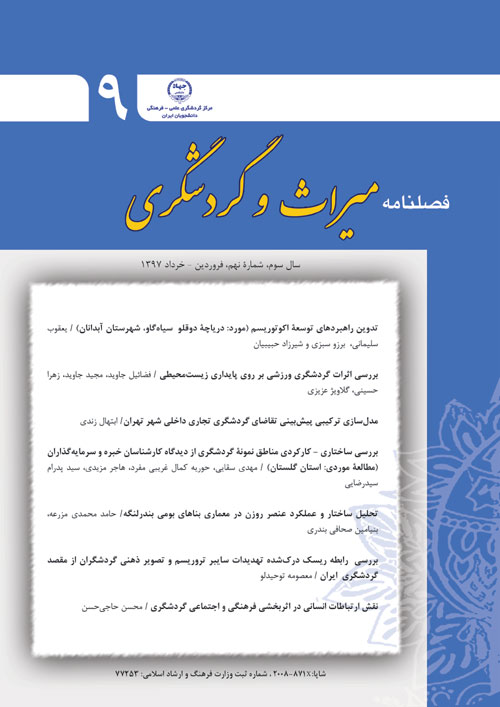Investigating the Relationship between Crime and Tourism in Iran's Provinces, Generalized method of moments Approach(GMM)
The emergence of crime is one of the most important challenges as a phenomenon facing today's societies and all societies are confused and disturbed due to crime. Crime slows down the development path and threatens the security of the regions with the weakening of the indicators of social and human capital, the economy and the sovereignty of the people, thereby reducing the arrival of tourists. Tourism, in spite of the positive points of increasing income, creating employment and introducing culture to foreigners and etc., like any other phenomenon, has problems that can be threatened by social and familial values and mass extermination in societies. The success and sustained growth of tourism depends on the proper and consistent operation of several factors that are closely interlinked, one of the most important of which is the safety of tourists for tourism purposes. In this study, given the importance of the subject of crime and tourism, and the mutual opposition of these two variables, in two separate models using the panel data approach and generalized method of moments (GMM), for the time interval of 2005-2016 and data of provinces of the country were evaluated. First, using the principal component analysis method (PCA), the variable of the crime rate obtained from the combination of nine indicators of theft and then the research model was estimated. Accordingly, the results of the first model showed the positive impact of tourism on crime rates in the provinces of the country, and the results of the second model showed that by increasing the crime rate, tourism rate is decreased.
-
Time-Frequency Analysis of Oil price and its Volatility Pass-Through into Inflation in Iran
Zahra Hemati, *, Mojtaba Almasi
Journal of Economics and Modeling, -
Investigating the Asymmetry of Exchange Rate Pass-Through to Expected Inflation in Iran Using NARDL Approach
Mehdi Azimzadeh, *, Ali Flahati
Quarterly Journal of Applied Economics Studiesin Iran,



